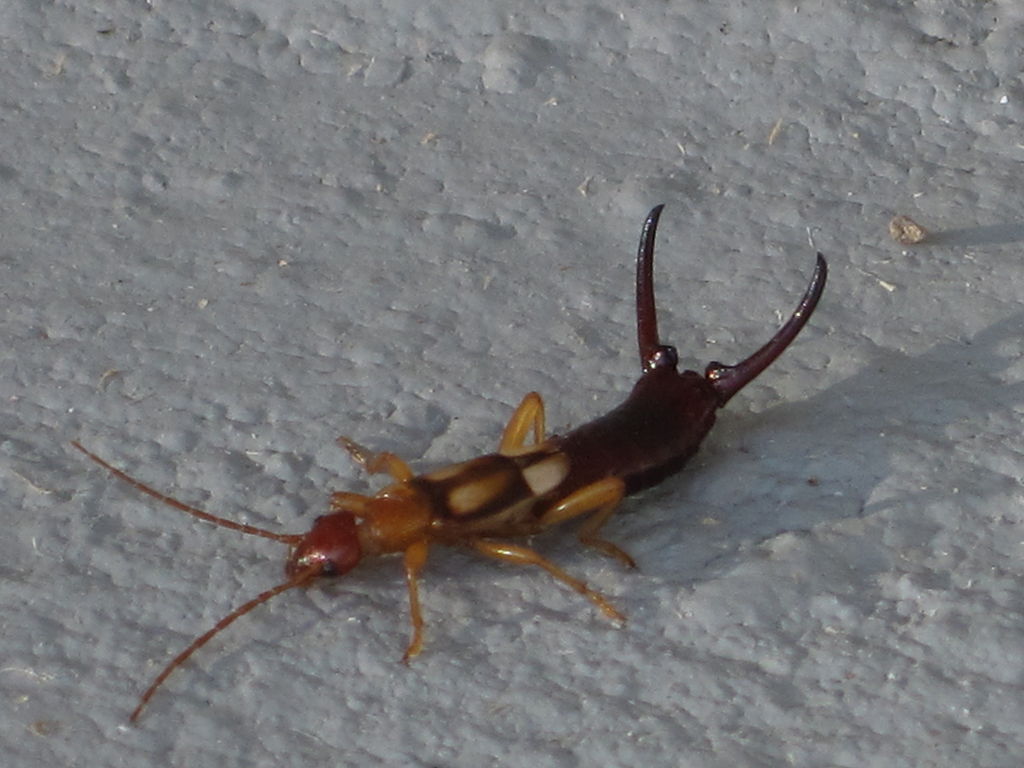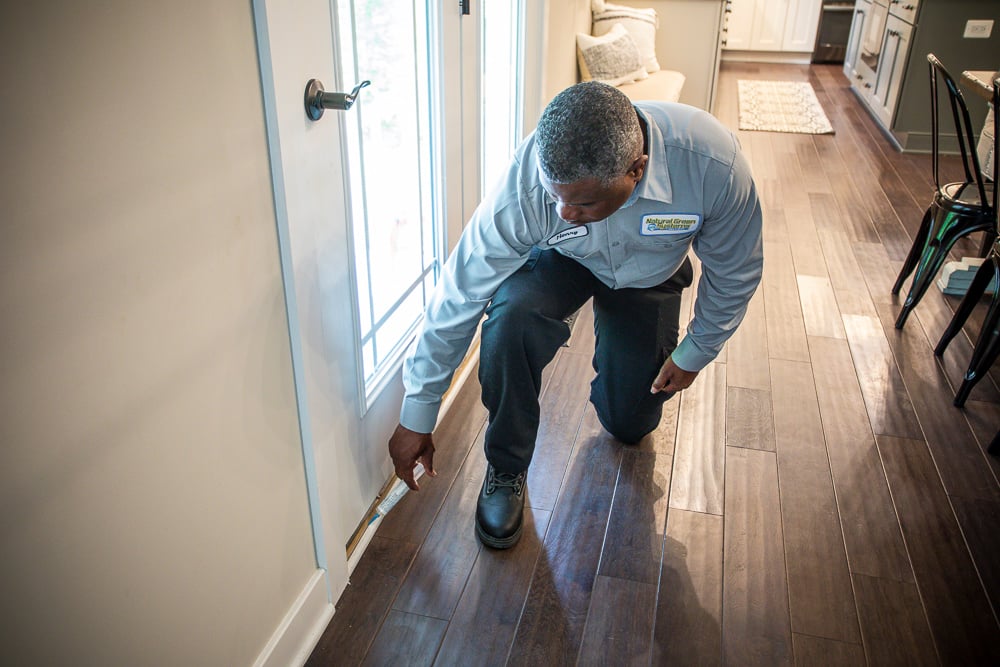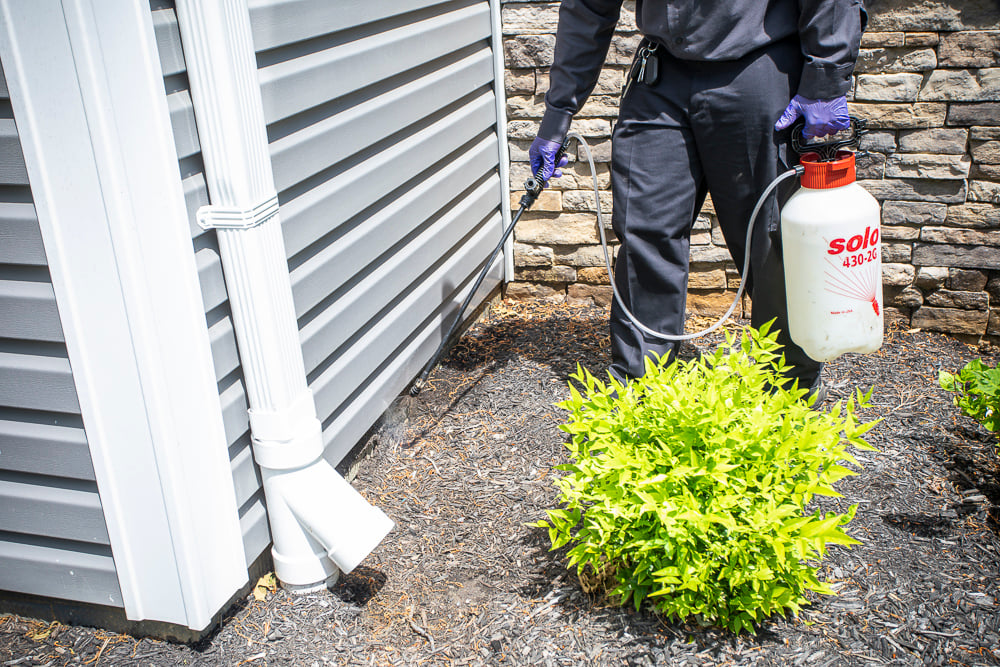Earwig Control in Maryland: 5 Earwig Prevention Tips For Maryland Homeowners
A lot of bugs have creepy names or names that sound creepy at least. Others are stars in creepy stories. For instance, earwigs. There’s a story that says earwigs burrow into your ears at night while you sleep. Gross. And completely untrue … thank goodness! But it doesn’t make earwigs any less gross to have hanging out, making nests, and breeding in your Central or Southern Maryland home. Let’s learn a bit more about these pests and how you can get rid of earwigs … and hopefully the nightmares they may have caused you. Earwigs are unfortunately a pretty common pest in Maryland. Use This Pest Guide to Identify & Eliminate 28 Different Pests! And their perception is a whole lot worse than their actual activity and preferences, which should ease your mind a little. Despite all of the superstitions out there, they won’t climb into your ears at night. First, let’s look at earwig identification. The adults range in size from ¼ to 1 inch long, and they are reddish-brown in color. They have six legs with long antennae and two pairs of wings. They also have a pair of pincers at the back of their abdomens, which come in handy for catching prey, defending themselves, and attracting mates. While earwigs are mostly outdoor bugs, living under rocks, in your mulch, or under outdoor leaf piles, during colder months they look for places to overwinter. And your basement can look pretty attractive. How do they get into your home? They crawl through drains, sneak under doors, slip in through cracks or holes around windows or your home’s foundation. They can even be lurking under or in your plant containers that you might bring in for the winter. When you see earwigs in your home, don’t panic. Their intention isn’t to hurt or bite you, but if their pincers break your skin, it could result in a skin infection. And while they may not damage your home the way termites do, in large enough numbers they can start eating your live plant material in addition to your dead plant material, putting stress on your plants. So, naturally, you want to learn how to prevent earwigs to avoid these complications. And we’re happy to oblige with some trusty tips you can use to keep these pests out of your home. Earwigs come into your home, seeking refuge and moisture. They can be attracted to mold in your walls since they already hang out in moist places outdoors and eat decaying plant material. So, earwig prevention tip No. 1: By reducing excess moisture, there’s less of a chance you’ll draw them in when they are looking for winter homes. You can also eliminate excess moisture around your home by maintaining your irrigation system and ensuring there are no leaks. Any amount of yard debris creates big hangouts for lots and lots of earwigs. As such, another earwig prevention tip is to keep your yard clean. This means having debris or leaf piles removed quickly. Also, keep tree and shrub branches pruned around your home. Remember to store firewood a minimum of 20 feet away as well. Sealing entry points is another earwig prevention tip. If they can’t get in, they won’t be a problem for you in your home. You also want to clean up indoors. This prevents clutter, which is also a place earwigs can hide. To get rid of earwigs, clean up your home regularly. Vacuum and sweep to prevent them from finding homes and food in your garbage, dust piles, clutter, and even your dirty carpet. If you think you have earwigs, and you’ve done what you think you need to for earwig elimination, but you’re still seeing them in your home, you might be pretty frustrated. For complete earwig control, you might also consider hiring a pest control professional. They have dealt with them before, and know where to look to seek out these small, annoying pests. If they find an infestation, they will do a general pest control treatment to banish earwigs from your home. Then they will come back quarterly for perimeter pest control treatments and inspections to keep them out and ensure they aren’t sneaking back in. Earwigs may not hold true to their legendary, but false, reputation. But that doesn't make them any less desirable in your Central or Southern Maryland home. No one wants to feel as if their home is being taken over by bugs. We get it. If you’re concerned about earwigs in your home, we’d love to help you with earwig control in Maryland. Hiring a reputable pest control company with experienced technicians can give you peace of mind, while eliminating these nasty pests for good. We want you to be able to enjoy your home -- insect-free. Give us a call and we’ll bring our proven pest control experience and create a custom plan for your Central or Southern Maryland residence. Get started today with a free quote. Image Source: EarwigEarwigs in Maryland
 Learning more about these pests can help you better understand them. Knowing how they behave can also give you some clues on how to get rid of earwigs.
Learning more about these pests can help you better understand them. Knowing how they behave can also give you some clues on how to get rid of earwigs. How to Master Earwig Control in Maryland
1. Reduce Excess Water and Moisture Indoors
 Run a dehumidifier in your basement, have your pipes and drains checked for leaks, and control mold in your home and you become less of an attractive home for earwigs.
Run a dehumidifier in your basement, have your pipes and drains checked for leaks, and control mold in your home and you become less of an attractive home for earwigs. 2. Clean Up Your Yard
3. Seal Cracks and Gaps
 You want to look for cracks, crevices, gaps, or openings around your foundation, windows, doors, or siding. Seal them with silicone or caulk. Installing weatherproofing around windows and doors can also help.
You want to look for cracks, crevices, gaps, or openings around your foundation, windows, doors, or siding. Seal them with silicone or caulk. Installing weatherproofing around windows and doors can also help.4. Eliminate Clutter
5. Hire a Pest Control Professional
 To master earwig elimination in your home, a pest control technician will conduct an inspection, looking for entry points and sealing anything that is ½ inch in size or less. They will also alert you to gaps that are over ½ inch since those need additional work to close. They can look around your home and tell you what other things you might want to try to keep earwigs out.
To master earwig elimination in your home, a pest control technician will conduct an inspection, looking for entry points and sealing anything that is ½ inch in size or less. They will also alert you to gaps that are over ½ inch since those need additional work to close. They can look around your home and tell you what other things you might want to try to keep earwigs out.  With a professional on hand, you won’t have to stress about finding more earwigs because you have professional eyes on your property, and the perimeter treatments also keep other pests from coming in.
With a professional on hand, you won’t have to stress about finding more earwigs because you have professional eyes on your property, and the perimeter treatments also keep other pests from coming in.Suspect Earwigs? Let Natural Green Help


